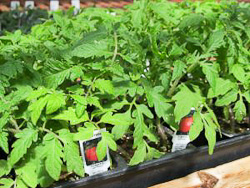
Seasoned gardeners know that a bountiful garden isn’t an accident- it takes planning. It can be as simple as generating a row of lettuce to pulling off Beefsteak tomatoes, a 300# pumpkin or the 3rd rotation of broccoli- it just all depends on what your ambitions are! Don’t be scared…start simple and you’ll be successful!
Plants are categorized by many definitions but for now, let’s first address “cold crops” including the Brassica group (broccoli, cabbage, cauliflower, etc.) lettuce, spinach, chard and other plants that are not adversely affected by low temps and snow. Direct sown crops could include carrots, peas and radishes. We gauge start times looking at our average last frost date of May 15. Many of the cold crops we grow are ready for planting around April 15 and later. Sowing seed for cold crops can be done around the same time and they will sprout when the temperatures are warm enough. Potatoes fall into this category too because their leafy sprouts will clear the soil around the last frost date.
If cucumbers, peppers, squash, tomatoes are the sort of plants you want to grow- wait until around mid-May, they don’t like freezing temps. Some folks wait until Memorial Day just to make sure. Some just can’t wait, planting tomatoes in April, putting protection around their investments until June. Yep, those gardeners often have the advantage, because although you can’t see it, the plants are developing strong roots. Once the warm weather hits, they are ready to roll!
Colorado has rogue weather- keep an eye to the sky and protect the tender plants from freezing. Cover with cloth because plastic can conduct the cold if it touches the leaves. Or make sure the plastic is suspended over the plants. Keep in mind snow cover will keep plants at 32*; ambient air temps can go lower! Uncover plants when the temperatures will hold above freezing.
